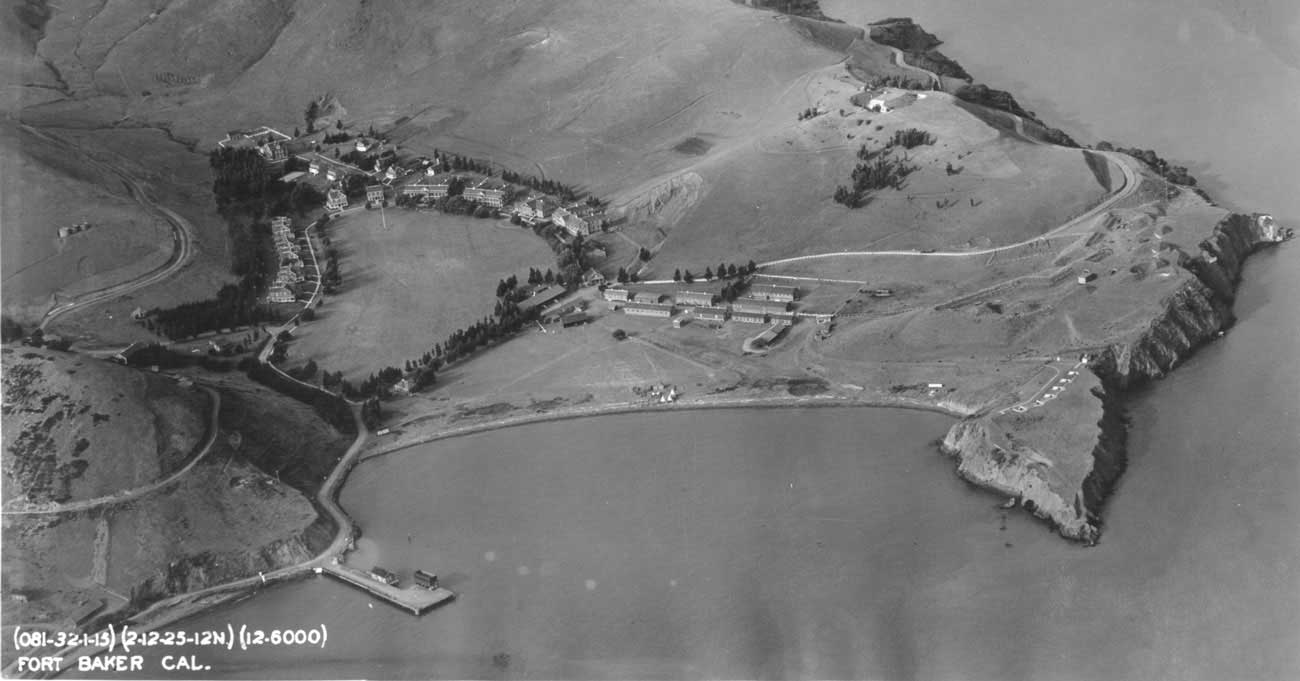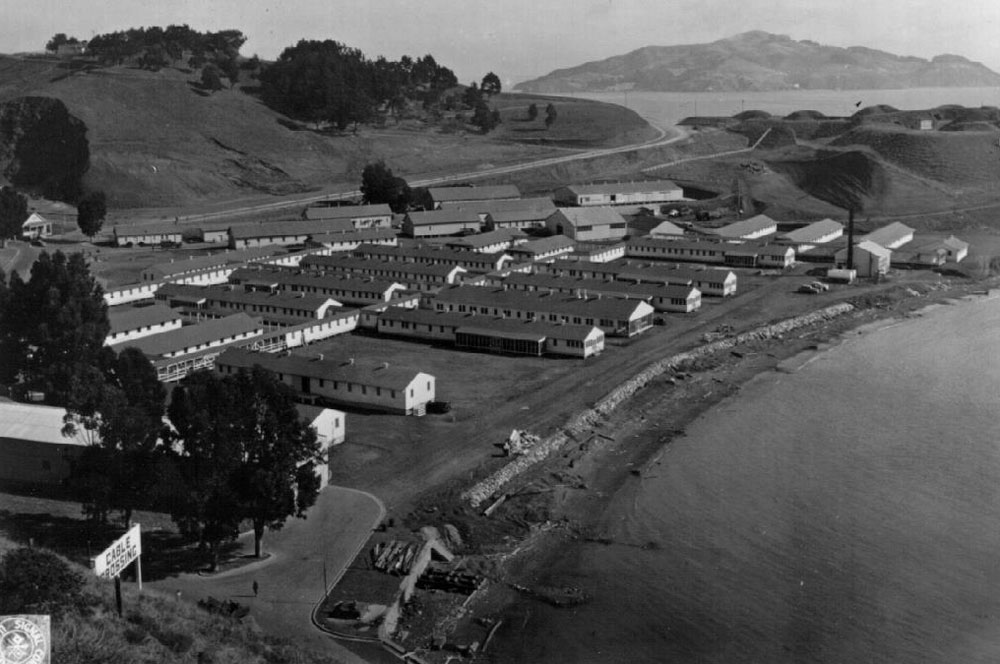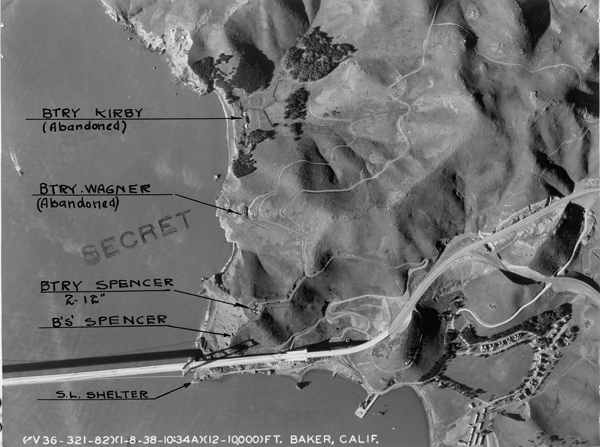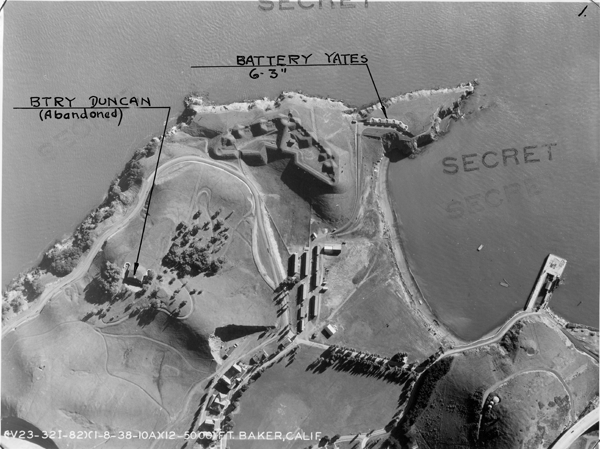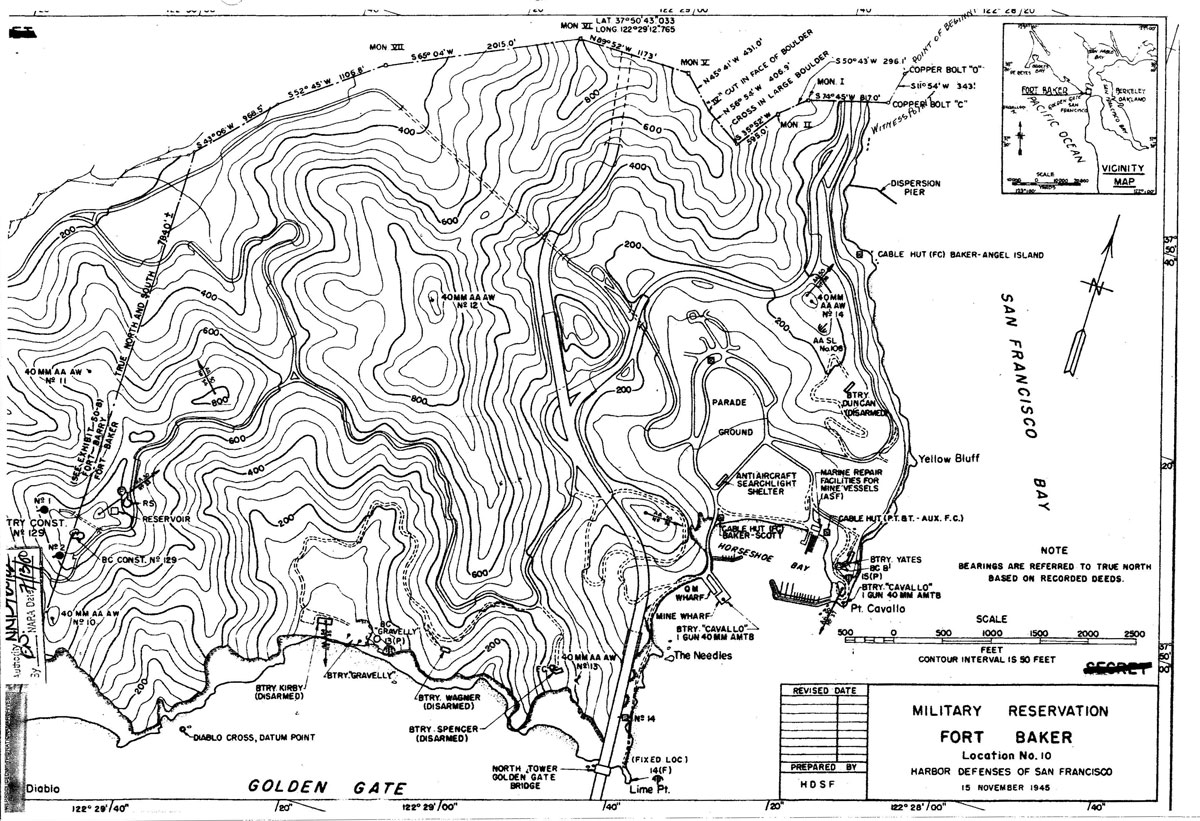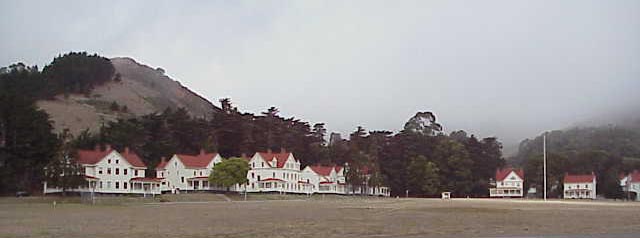|
Data Source |
Date(s) |
Unit(s) |
- Order of Battle of United States
Land Forces in the World War (1931-1949)
|
World
War I |
- 1st, 2nd, 3rd, 4th, 11th (I)
Coast Defense Companies, Fort Baker
- 11th (II), 12, 13th, 17th, 45th
(II) Companies, Coast Defenses of San Francisco
|
| US Army
Order of Battle 1919-1941 |
1919-1922 |
11th
Company, Coast Defenses of San Francisco |
| US Army
Order of Battle 1919-1941 |
1922-1941 |
Caretaker
Detachment, 6th Coast Artillery Regiment |
| US Army
Order of Battle 1919-1941 |
1941- |
Battery
K, 6th Coast Artillery Regiment |
